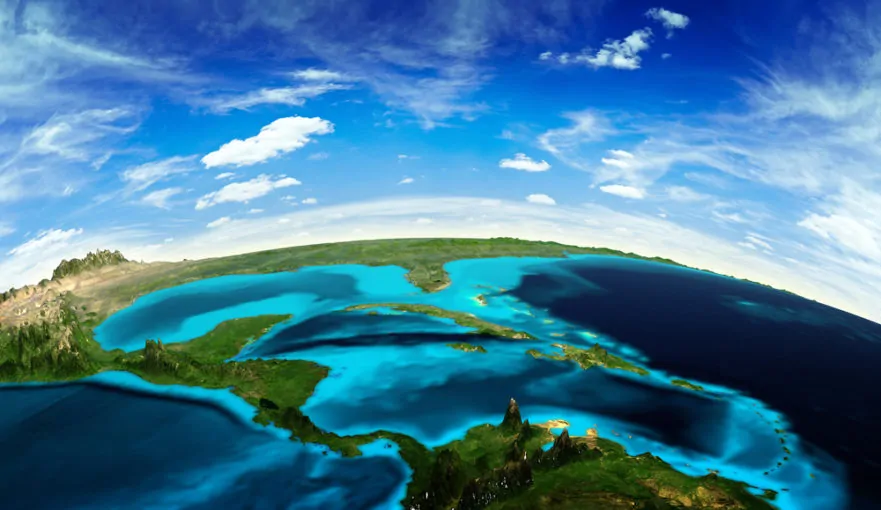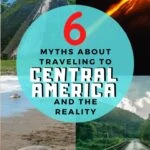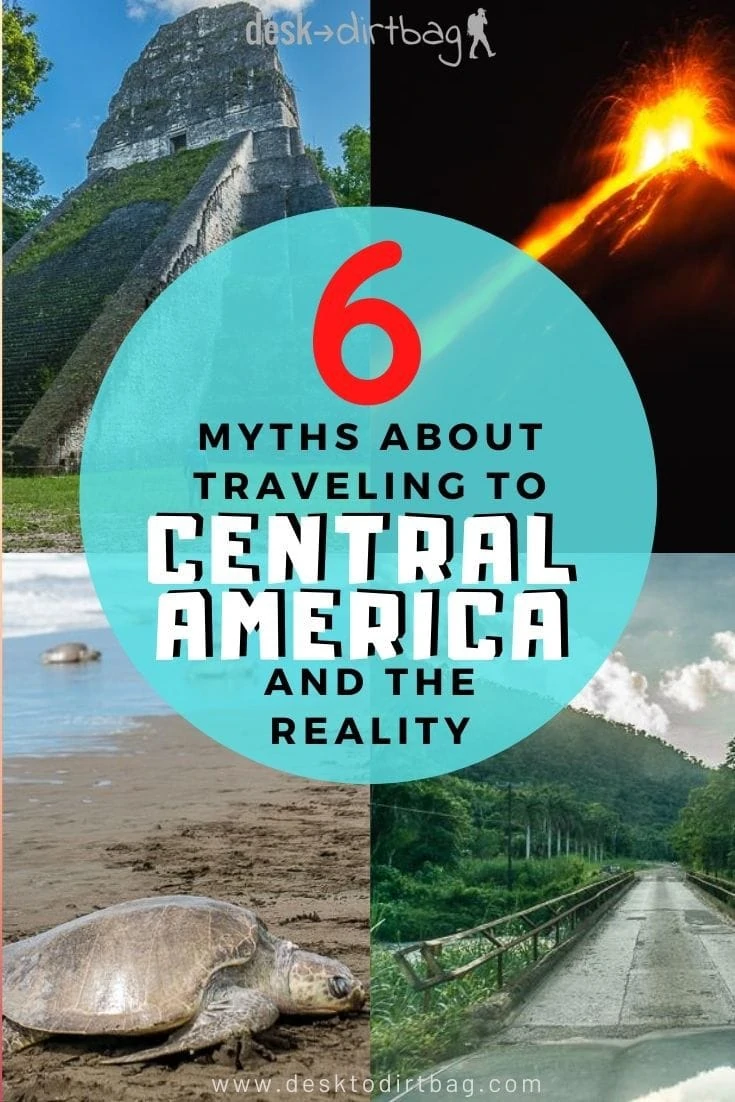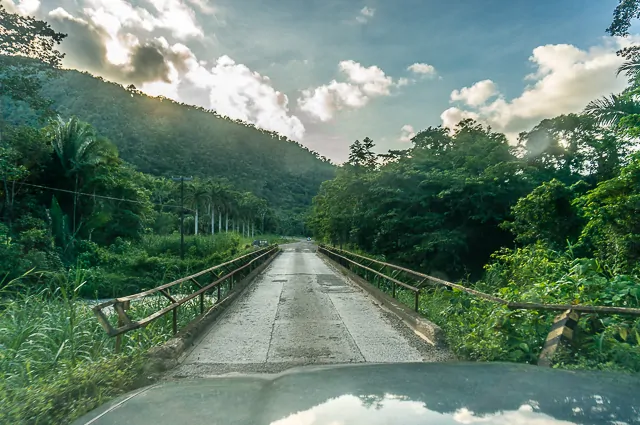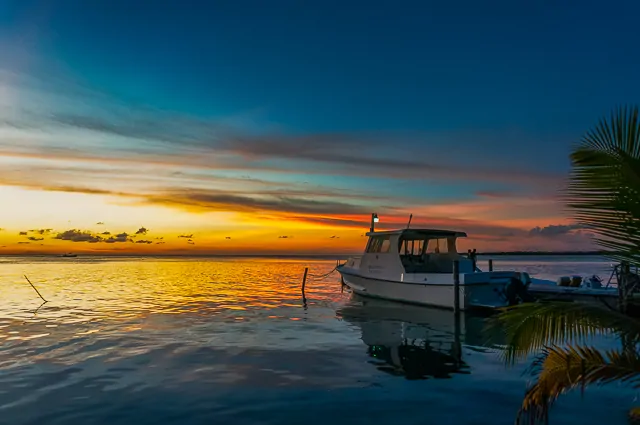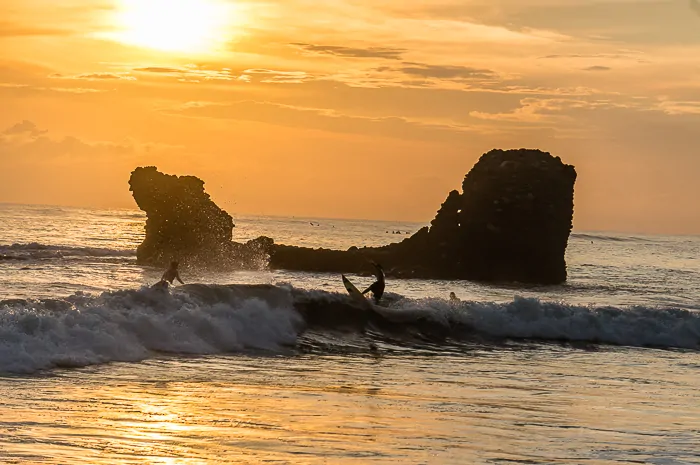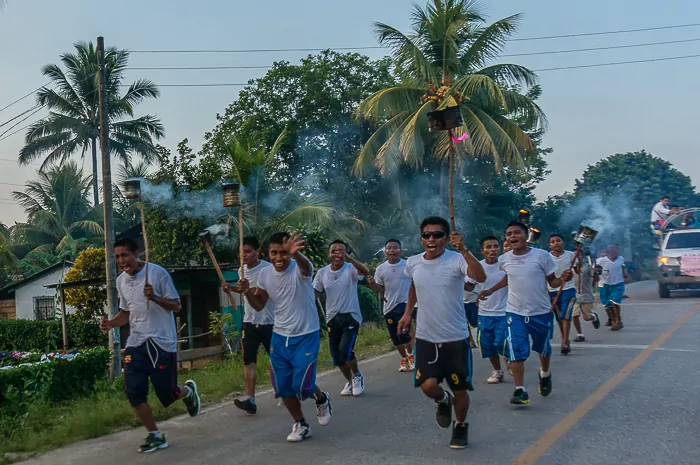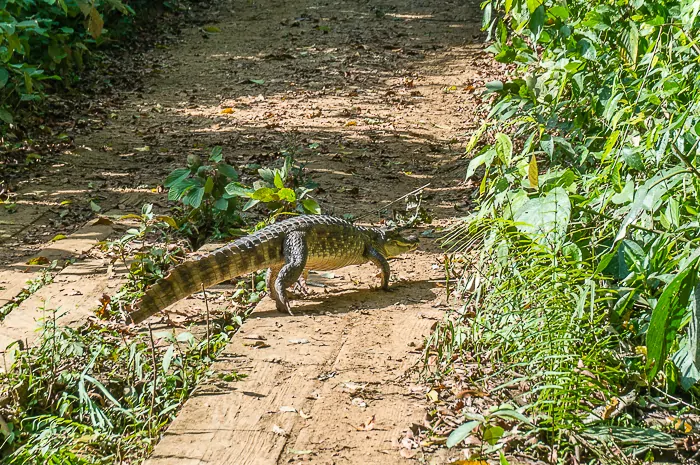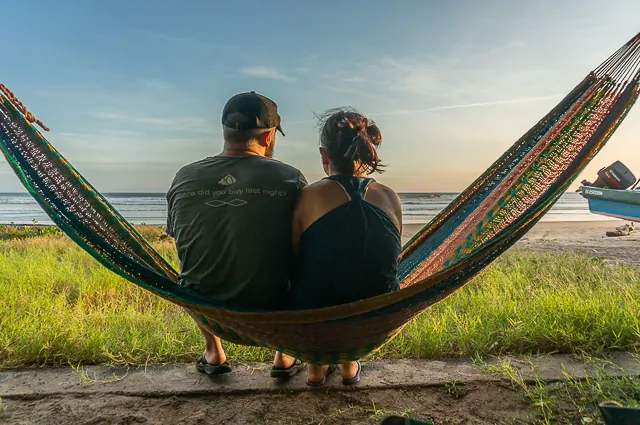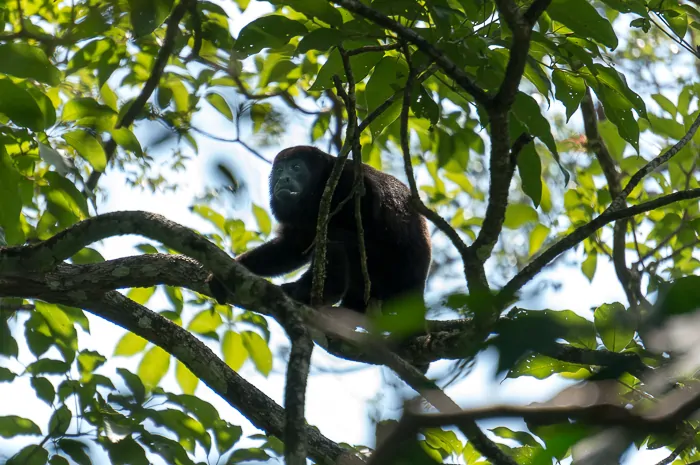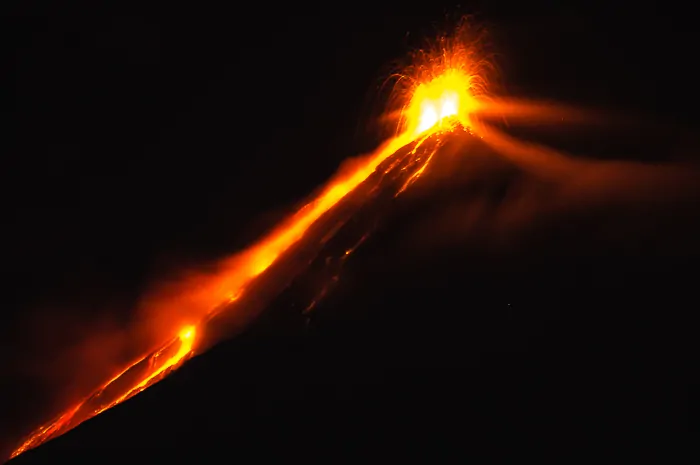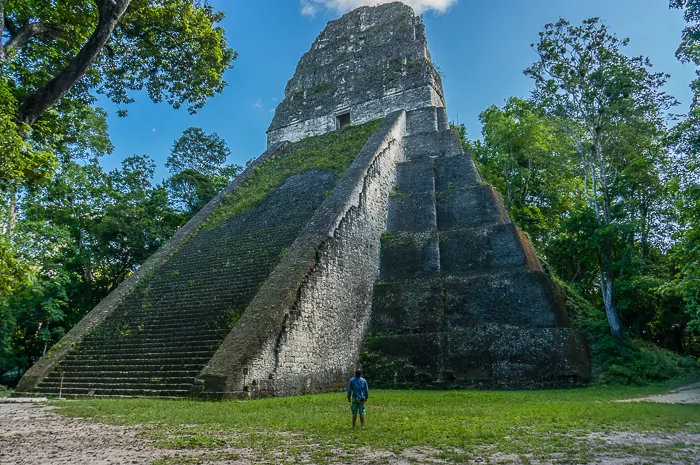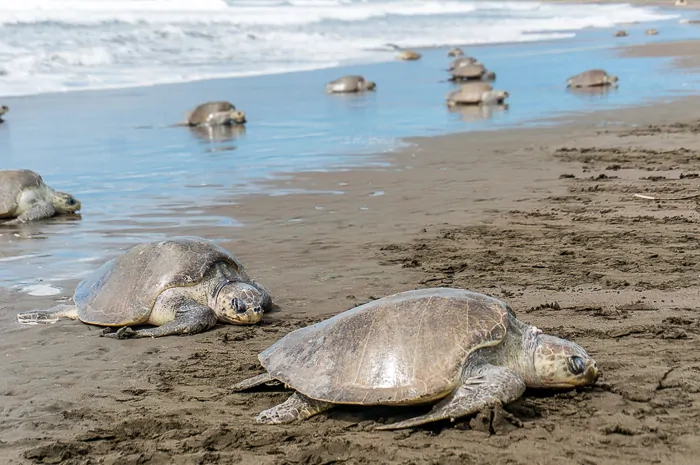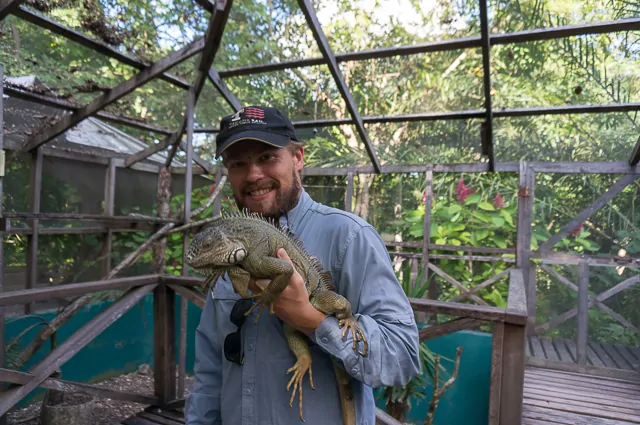Thinking about traveling to Central America? The seven countries that are most commonly defined as this region — Guatemala, Belize, Honduras, El Salvador, Nicaragua, Costa Rica, and Panama — have rich histories and cultures, and most travelers truly enjoy their time spent there. As you brainstorm and plan, friends and family will warn you against Central American travel.
They’ll tell you all kinds of horror stories about the area and about why you should rethink your trip. Before they convince you that you’re crazy and make you change your mind, ask if they’ve actually been to Central America. Chances are that they haven’t. A lot of the negative stories you hear about the region are nothing but misinformation.
Don’t believe everything bad that people say. If you talk to people who have actually been there, they will share all sorts of stories about how fun, awesome, and enjoyable their trip was, and then they’ll mention about when they’re trying to go back.
Here I’ll share 6 myths about Central America and the reality which will show you why you don’t have to worry about traveling to this region nearly as much as most people think.
Central America is Dangerous
A lot of the myths about traveling in Central America circle back to the idea that danger lurks around every corner. You’ll get warnings galore — if you travel in these countries, expect muggings at every turn and getting caught up in civil wars. You just can’t expect any semblance of safety in Central America, they’ll say.
Of course, whenever you travel you do run the risk of getting mugged or pickpocketed. That’s true whether you’re in Paris, Chicago, or Costa Rica. To date, the only place I’ve ever been mugged in the world was in Washington D.C. where I lived and worked, and it happened only a few blocks from the U.S. Capitol Building.
You can help protect yourself by practicing situational awareness, not wearing flashy clothes or jewelry and doing thorough research about what areas to avoid, including by talking to locals.
Most always they’ll say “aqui no pasa nada” so if they do say beware, then you should take note (unless they are talking about a neighboring country or a place they don’t really know). These are all good practices, but you’ll find that people greatly exaggerate the likelihood of getting mugged in Central America — most travelers have no problems at all.
When it comes to civil war, no one would deny that conflict and violence has played a significant role in these countries’ histories and shaping what they are today, but there are no civil wars waging in Central America now. Should you avoid an area simply because it has violence in its history?
That leaves very few destinations to visit in this world. Rather, I’d recommend learning about the turbulent past of the region which can help add context and understanding to the culture you experience during your visit.
After driving through all of Mexico and Central America, I can honestly say that things are basically safe and sane here, there is nothing too crazy or out of the ordinary… And yes, many people I knew thought that I was mad when I told them of our plans to drive across all of Latin America.
Ultimately, if you maintain street smarts and safe travel practices, you’ll have a great time in Central America without any significant safety risks.
Read More: The Safest Countries in Central America
The Food and Water Will Make You Sick
You can also expect a lot of warnings about the food in Central America. People will tell you that you should only eat rice and beans because everything else will make you sick. You’ll get warnings about drinking the water and how you should avoid eating street food. This does sound pretty bleak; why would you want to travel anywhere with such unpleasant food and undrinkable water?
Let’s address the water first. There’s an element of truth to this — much of the water in Central America can be unsafe to drink. If you want to avoid traveling to places where you could have problems with drinking water, then Central America is out. So is Mexico. As well as Ukraine, the Bahamas, Colombia, China, Fiji, Russia, Cuba, India, Morocco, Thailand, and Egypt.
Heck, some parts of the United States suffer from outbreaks of microorganisms in the water at times. It wasn’t that long ago that the people of Flint, Michigan had to use bottled or filtered water not just for drinking but for cooking, cleaning, and even bathing. So while you may want to take precautions with the water in Central America, the region isn’t alone in that regard.
When traveling in the region, learn what water you can safely drink, and how to avoid potentially contaminated water. Learning to treat water to render it safe will give you a little peace of mind — boiling for five minutes is one reliable method that will render just about any water safe to drink.
Personally, I travel with a Steripen that I bought at REI and which treats water with ultraviolet light, killing off all those nasty microorganisms. I used this for tap water all across Central America and South America (as well as countless nights camping or backpacking in the United States) and can fully endorse this method as being both reliable and effective.
If nothing else, you can buy bottled water, which you can trust is safe, although I hate to generate so much plastic waste.
When it comes to food, you’ll find a similar situation — some foods absolutely can make you sick. Of course, anyone who has ever had food poisoning can attest that sometimes a restaurant in your home town can make you sick too.
Instead of avoiding Central America or some of the tasty and cheap food you can enjoy there, exercise caution about the foods you eat. Do vendors wash fruits and vegetables in raw water before selling them? If so, you may want to avoid them or clean them first. Uncooked vegetables that have been washed with the local water are a common source of problems. Properly cooked foods should pose much less risk to you.
Avoid street food carts that don’t seem to have a lot of business — instead, take the time to wait in a line for street food that everyone seems to eat. Locals and travelers alike won’t return to a restaurant or vendor that makes them sick.
If you prepare your own food in your hotel or hostel, you can ensure that you eat safely, and save money for other aspects of your trip. That said, enjoying local fare provides a wonderful travel experience, so you shouldn’t avoid it altogether. Many travelers never suffer from any problems with food or water; just remember to exercise caution and you’ll be just fine.
Indeed, I think local food and flavors is one of the most important aspects of travel, so if you never eat out, you are missing one of the most important parts of the travel experience, in my opinion.
You Must Speak Spanish To Travel in Central America
How can you travel in Central America if you don’t speak Spanish? You’ll never know where to go, or how to get places. You can’t ask for help if you need it or even order food. How can you ask for bottled water if you don’t speak Spanish?
Expect to hear a lot of arguments for avoiding Central America if you don’t speak Spanish. Not speaking the local language makes some people uncomfortable but stepping outside your comfort zone adds more to the experience in the long run.
You’ll encounter a lot more English in Central America than a lot of people would expect. In all parts of the world, cities are melting pots of culture, so the locals have encountered plenty of English speakers in the past. Any area that experiences tourist traffic will have learned a sufficient amount to help you get around.
But even if you don’t speak the language, you can still find ways to communicate what you need and get help from locals if you have patience, creativity, and a little bit of skill with charades.
Even the most experienced traveler (or perhaps especially the most experienced traveler) has faced situations where they couldn’t speak the language and had to communicate in other ways.
It used to be more difficult, now everybody has those fancy smartphones with Google Translate built right in. Further, English gets used a lot in some parts of Central America — in fact, it’s the official language of Belize.
This doesn’t mean, of course, that you shouldn’t try to learn a little Spanish before you head to Central America, in fact, I’d encourage you to learn as much of the basics as possible before leaving (here are my top resources to teach yourself Spanish). It can help you get around, especially if you like to travel off the beaten path, but you don’t have to speak Spanish fluently to enjoy this part of the world.
Also of note, many travelers jump at the chance to stop and learn Spanish in places like Guatemala where they can take a private, 1:1 class with an experienced teacher, and/or do a homestay with a local family where they can further practice their newfound Spanish skills. Not only that, but the homestay offers a chance for all sorts of new cultural insights, understandings, and fun new memories.
Central America Travel Is Expensive
Because more and more people have become interested in traveling to Central America, many people believe that it has become too expensive for the average traveler.
Of course, if you’re looking for expensive luxury, you can certainly find it with luxury Costa Rican retreats for over $1,000 a night, or you could schedule expensive sightseeing tours. Those experiences cost way too much for your average budget traveler, at least for my type of budget.
On the whole, really with the exception of just Costa Rica, Central America is a very affordable place to travel. You will find great values when it comes to lodging, food, transport, etc. It is among the best budget travel destinations in the world, so don’t be misled into thinking that Central America is expensive.
You can book a fancy hotel room in Nicaragua or Guatemala for $100 or less at times, although a normal budget property can be had for $20 a night, or less. You don’t have to eat at five-star restaurants if you want to be careful about your food selection and where you eat. You’ll find plenty of healthy local fare almost everywhere, just ask someone there for recommendations.
Arrange your own travel logistics and aim for cheap accommodation if you want to save money. Avoiding the most expensive cities (few and far between) and staying in hostels can also help you make the most of your budget. Those hostels usually have kitchens to cook up at least one of your meals each day (I usually cook breakfast and eat out for lunch and dinner).
Be sure to take read my guide to budget travel tips.
When you plan your trip carefully and avoid overspending, you can easily travel for a month in Central America for under $1,000. That’s a pretty high return on investment, so don’t put too much stock into the myth that Central American travel costs too much.
You Can’t Trust the Locals
So many people worry that the locals in Central America can’t wait to take advantage of naive travelers, from selling them overpriced goods to luring them into alleys where muggers await. This relates directly to the myth that danger lurks around every corner in Central America.
While you shouldn’t blindly trust every single person who approaches you in the streets, you absolutely should seek the guidance of locals while visiting Central America. Looking for a tourist-friendly restaurant you can trust? Ask the host at your hostel or the concierge at your hotel.
I often asked random people on the street who were more than happy to help, and their recommendations were almost always off the beaten tourist path.
While there are always a few bad apples in any place who see tourists as a bottomless wallet that they can take advantage of, the truth is that those experiences are very rare. As a rule of thumb, don’t shop or eat at places where they have menus in English or prices in dollars (unless that’s the local currency, of course, like in El Salvador) as that is a red flag.
For the most part, locals throughout the region are quite friendly, and they can provide a reliable source of information on things that you should see, restaurants you ought to visit, and neighborhoods to avoid. Books and websites simply can’t keep up with the changing conditions as quickly as locals can.
There’s Not Much To Do in Central America
If you’ve considered traveling to Central America then you already know that the region boasts tons of amazing things to see, fun activities and cultural attractions. This myth clearly comes from people who have never visited any of these countries.
Central America offers more amazing experiences than most people can pack into one trip. And the best part is that it is all fairly well contained within a small geographic area. Want to hike among ancient ruins and volcanoes? How about snorkeling, exploring jungles or visiting museums?
Just about anything you’d love to do, you can do in Central America. Sailing, swimming, traditional dancing, surfing and much more all wait for you on your trip.
Some of my favorite highlights from Central America include:
- Watching a volcano spewing lava all night from the safety of our hostel in Guatemala
- Exploring the ruins of Tikal in Guatemala
- Hanging out on the car-free island of Caye Caulker, Belize
- Releasing baby sea turtles into the ocean in Monterrico, Guatemala
- Watching the surfers tackle some monster waves in El Tunco, El Salvador
- Exploring the cobblestone streets of Granada, Nicaragua
- Witnessing an arribada where thousands of sea turtles converge on the beach in daylight in Costa Rica
- And so much more…
From National Parks to city streets, you’ve got tons of options for things to do and see in Central America — anyone who finds this region boring has simply never visited themselves or is a total bore themselves.
You’ll hear all of these myths and probably more when planning a trip to Central America, but don’t let them scare you away from a beautiful place to explore. Lots of amazing adventures await you in Central America — plan well, exercise a little caution and you’ll have a wonderful Central American travel experience. I know I did!
Although, I would highly recommend purchasing travel insurance before visiting Central America to protect yourself against injury, illness, and theft. What I use and recommend is World Nomads, you can get your quote here:
Share This
Did you enjoy this post about Central America travel myths? Take a second to share it on Pinterest, Facebook, or Twitter. Thanks!
Latest posts by Desk to Dirtbag (see all)
- 8 Best National Parks to Visit With Your Dog - August 10, 2022
- Where to Stay in Bogota: Ultimate Guide to the Best Neighborhoods, Hostels & Hotels - September 26, 2019
- 10 Best Santiago Tours: Activities to Experience in Chile - September 22, 2019
- Volunteering Abroad: 20+ Ways to Travel the World with a Purpose - September 19, 2019
- How to Avoid Cusco Altitude Sickness When You Visit Machu Picchu - September 15, 2019

